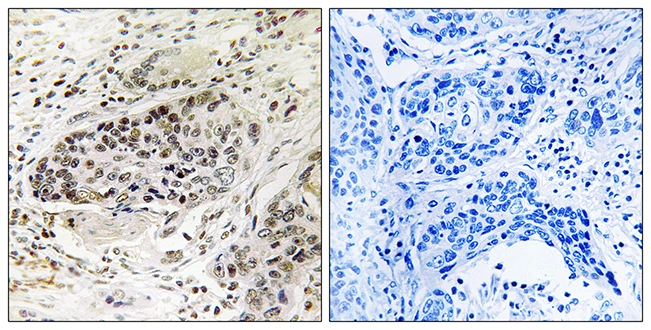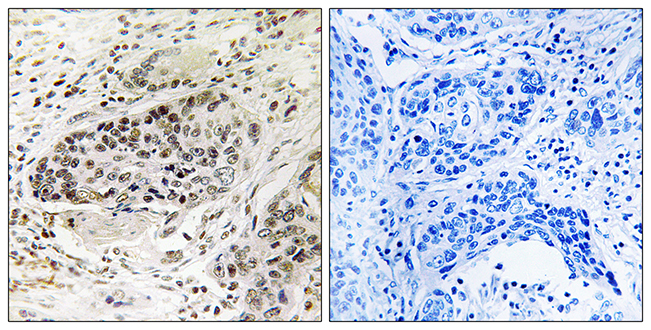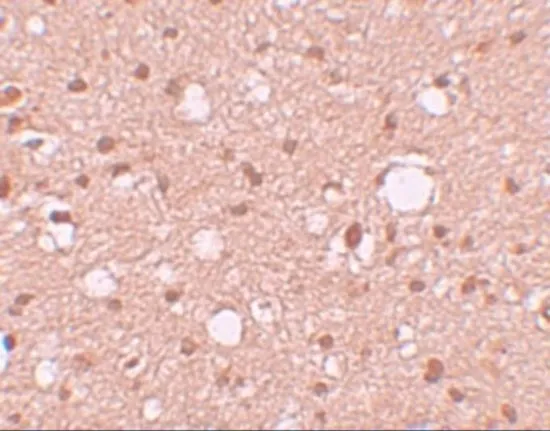
IHC-P analysis of human lung carcinoma tissue using GTX87895 APBA2 antibody. The picture on the right is blocked with the synthesized peptide.
APBA2 antibody
GTX87895
ApplicationsImmunoHistoChemistry, ImmunoHistoChemistry Paraffin
Product group Antibodies
TargetAPBA2
Overview
- SupplierGeneTex
- Product NameAPBA2 antibody
- Delivery Days Customer9
- Application Supplier NoteIHC-P: 1:50~1:100. *Optimal dilutions/concentrations should be determined by the researcher.Not tested in other applications.
- ApplicationsImmunoHistoChemistry, ImmunoHistoChemistry Paraffin
- CertificationResearch Use Only
- ClonalityPolyclonal
- ConjugateUnconjugated
- Gene ID321
- Target nameAPBA2
- Target descriptionamyloid beta precursor protein binding family A member 2
- Target synonymsD15S1518E, HsT16821, LIN-10, MGC:14091, MINT2, X11-BETA, X11L, amyloid-beta A4 precursor protein-binding family A member 2, X11-like protein, adapter protein X11beta, amyloid beta (A4) precursor protein-binding, family A, member 2 (X11-like), mint-2, neuron-specific X11L protein, neuronal munc18-1-interacting protein 2, phosphotyrosine-binding/-interacting domain (PTB)-bearing protein
- HostRabbit
- IsotypeIgG
- Protein IDQ99767
- Protein NameAmyloid-beta A4 precursor protein-binding family A member 2
- Scientific DescriptionThe protein encoded by this gene is a member of the X11 protein family. It is a neuronal adapter protein that interacts with the Alzheimers disease amyloid precursor protein (APP). It stabilizes APP and inhibits production of proteolytic APP fragments including the A beta peptide that is deposited in the brains of Alzheimers disease patients. This gene product is believed to be involved in signal transduction processes. It is also regarded as a putative vesicular trafficking protein in the brain that can form a complex with the potential to couple synaptic vesicle exocytosis to neuronal cell adhesion. [provided by RefSeq, Jul 2017]
- Storage Instruction-20°C or -80°C,2°C to 8°C
- UNSPSC12352203






